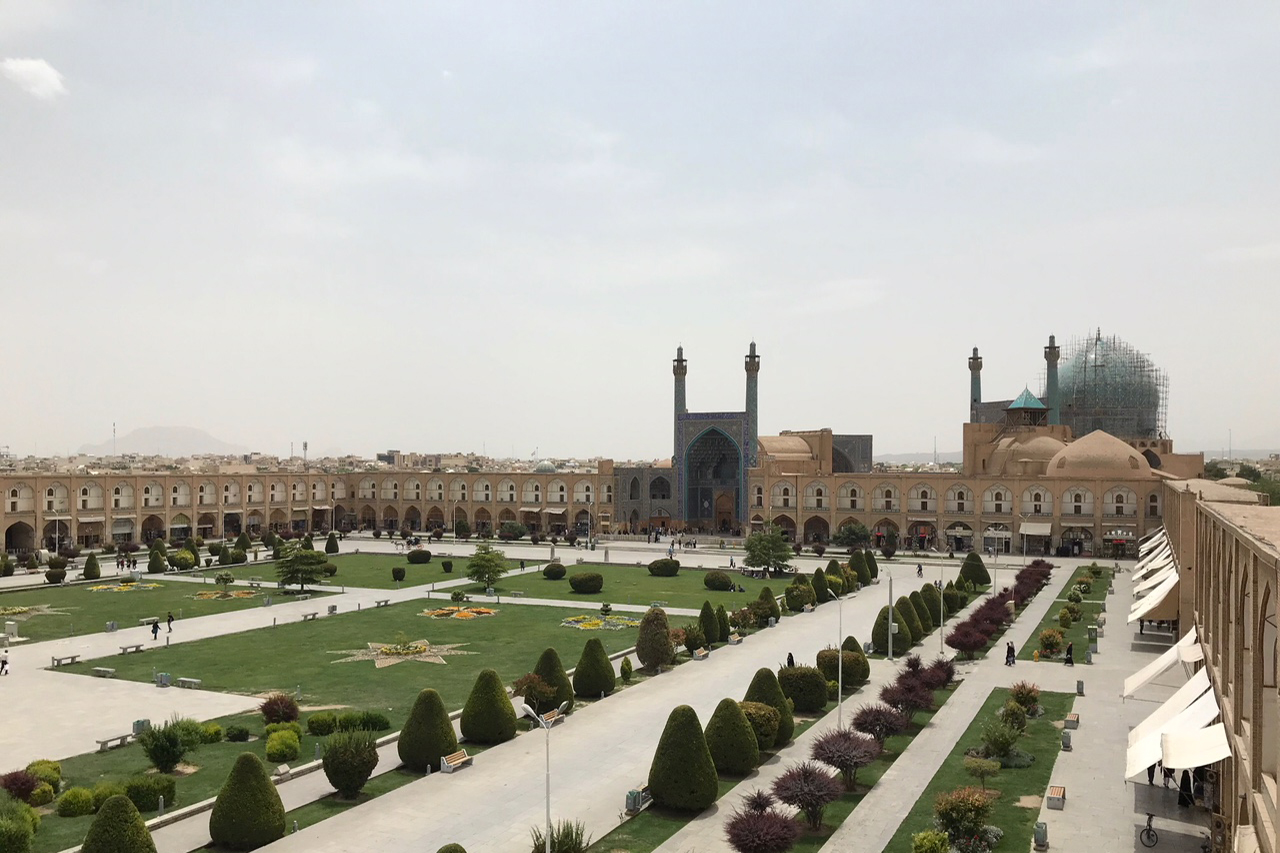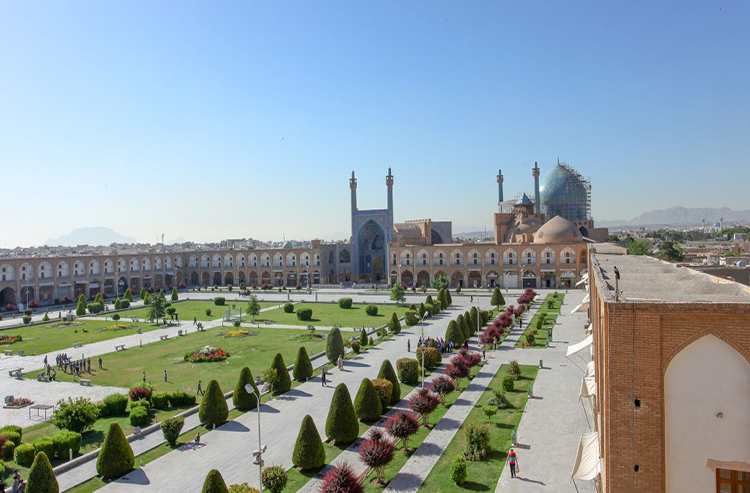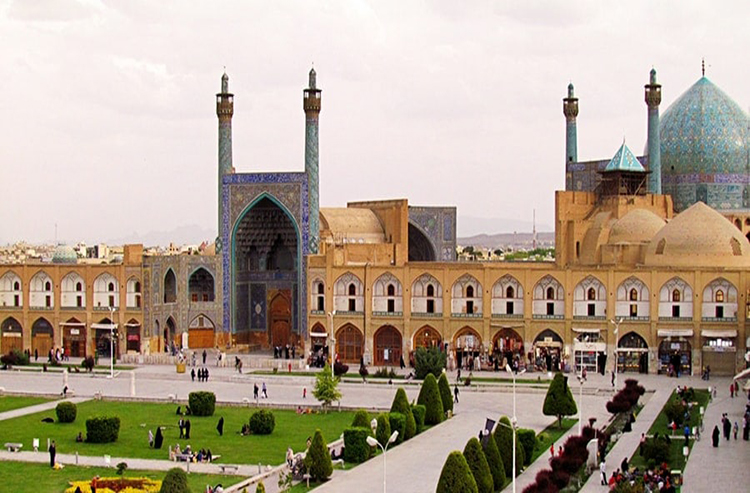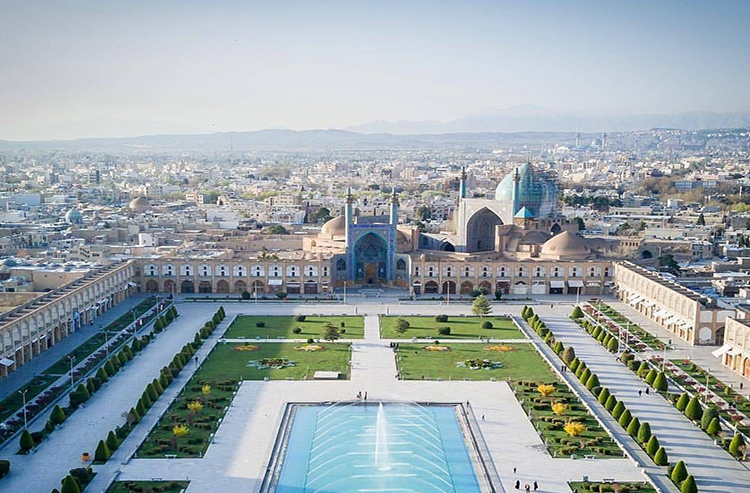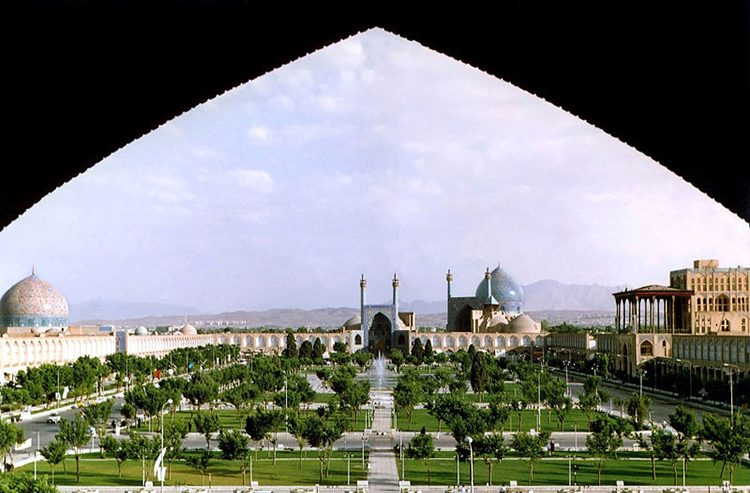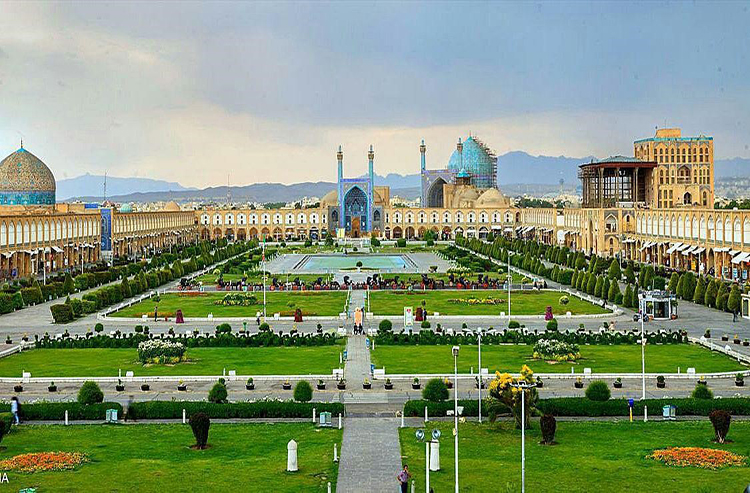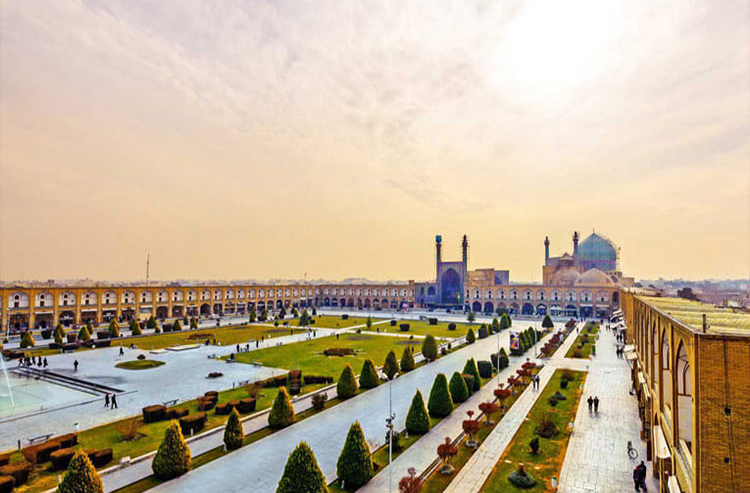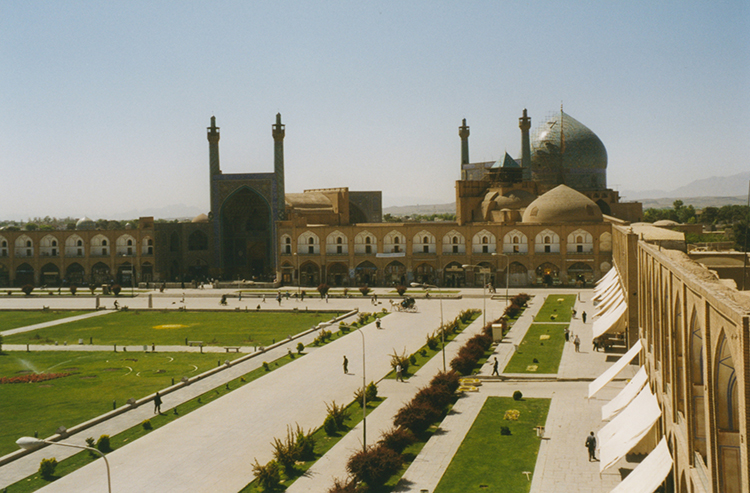Naqsh-e Jahan square
Naqsh-e Jahan Square, or Meidan-e Emam (also Shah Square and Imam Square is situated at the center of the city of Isfahan.
It is an important historical site and one of UNESCO’s World Heritage Sites. The square is surrounded by buildings from the Safavid era. The entrance to the Grand Bazaar and the Imam Mosque are opposite one another on the short ends while the Ali Qapu Palace and the Sheikh Lotfollah Mosque face one another on the longer sides.
This square is from the period of Shah Abbas I. The perimeter of the square forms a rectangle with two long sides and two short ends. It has a length of 500 meters from north to south with its width being approximately 165 meters. It is completely surrounded by decorated arcades and a bazaar, with the center of each side marked by a monumental building.
History of Naqsh-e Jahan Square
It was Shah Abbas the Great who made Isfahan his capital and then decreed that the square should be extended to its present size, and lovely buildings set around it. The length of this great square, which is actually rectangular, is 500 meters from north to south, and its width about 150 meters from east to west. It was laid out and beautified in the reign of Shah Abbas the Great, at the beginning of the seventeenth century.
Shaykh Bahai became the leading architect of the project. Since the politic strategy of Shah Abbas was concentrated on centralizing power structure of Iran, the main idea of the project was to reflect all the components of power. So the square is surrounded by several buildings, where Shah (Imam) Mosque represents the power of the clergy, the Imperial Bazaar represents the power of merchants and Ali Qapu Palace represents the power of Shah.Naqsh-e Jahan Square is 160 meters wide by 560 meters long, which results in a total area of 89,600 square meters. It is surrounded by two-story row of shops, reflecting architecture style of Safavid Era.
During the day the square was a place for trade, full of sellers’ tents. On evenings, when the sound of bargain vanished, the square turned into entertainment site with jugglers, acrobats, dervishes and curious citizens. Other events, such as Nowruz or polo matches were also held on the square. ( The Naqsh’e Jahan Square, nearly 1700 feet long — twice the size of Red Square in Moscow, seven times the size of St. Mark’s Square in Venice. is the second-largest square in the world (after Beijing’s Tianamen Square).
From that time until sixty years ago the square presented a very different aspect from the square to day. The whole area of the square within the limits of the water channels round it was quite level, while to the north and south stood two goal posts for the game of polo. Those two goal posts are still in position but replanning with large pool in the center, and lower beds round has transformed the square and given it a completely new look. Most of the buildings round are two-storied and the alcoves simply decorated.
